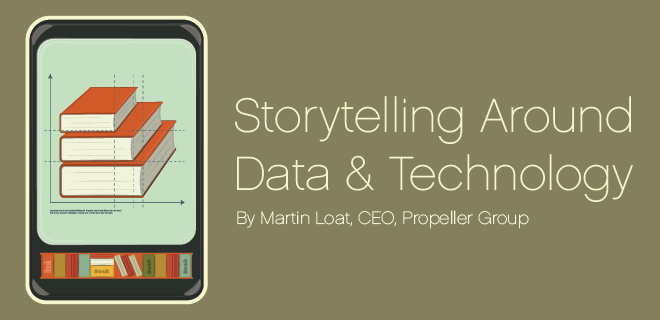
The global advertising industry has evolved in recent years and the ad tech sector is undoubtedly one of the biggest catalysts driving change. Whether you highlight the increasing number of quantitative ad buying teams and the rise of performance media buying, or the growing legion of stat-focused experts tasked with discerning actionable insights from big data, a clear shift has taken place. The change has wide-ranging implications for the ways brands communicate messages to consumers.
Across the creative, non-ad tech half of Propeller Group’s client roster, we’ve seen several agencies, digital agencies and media owners recalibrate their recruitment policies to hire employees with a firm grasp of statistical analysis and coding. But although technology and metrics are in the ascendancy, you write off the power of striking creative ideas and images at your peril. We should not lose the magic in the rush to logic.
Our client roster incorporates both creative agencies and ad tech companies, meaning we hear both sides of the argument – and my belief is that like the Chinese Taoist philosophy of Yin and Yang, the best way of achieving true equilibrium and success on any campaign is by embracing learnings from both sides.
Of Two Minds
The CEO of a global ad tech client recently told a Propeller colleague of mine that though Cannes Lions is a great place for networking and selling, he felt the real benefit of taking his team to the French Riviera was that it would enable them to get closer to creatives: both card-carrying craftspeople and their senior management.
He acknowledged that in general terms, people working in the ad tech sector are disproportionately drawn from mathematical and computer science backgrounds rather than arts degrees, meaning that they naturally excel in logical, ‘left side of the brain’ problems.
As such, he said he felt a key benefit of taking part in Cannes lay in teaching his colleagues lessons in how to think more creatively and to better understand those ‘in their right minds.’
This argument really resonates with me as though the logical and data-driven part of our industry is growing rapidly, I always counsel ad tech clients to never lose sight of the value of creativity and ‘leaps of faith’ on campaigns based on judgement and hunch that can’t always be backed initially with empirical proof.
From using a disgruntled meerkat to famously sell a price comparison site called ‘Compare the Market’ in the UK, to DirecTV’s darkly humorous take on the chain of events set in motion if you don’t sign up for their service in the US, certain campaigns are based on intuition and an artistic ‘muse of fire’ that could never have been devised purely by data-driven insights.
This is not to say that the creatives can’t learn huge amounts from their data-driven colleagues. There’s no point running a brilliant creative campaign if it’s not targeting the right audience and is not measured correctly. But ultimately advertising is about delivering both brand affinity and sales. Yet technology in online advertising has so far largely focused on the second area.
According to research last year by both the IAB, WARC and the AA, last year, online accounted for 30% of UK media spend, higher than any other channel including television. However the amount of money spent on television creative work compared with online creative work is still disproportionate to the level of overall media spend.
Dynamic creative and A/B testing using metrics and real time measuring of creative work can fine tune campaign response in highly effective ways. But no amount of A/B testing of furry animals would have led to consumers calling out, “We want meerkats!” A bold creative team, supported by a bold management and client had to make that leap of creative faith.
Distilling the Message
A similar left brain, right brain phenomenon also helps explain why it can be a challenge to get across B2B technology campaign messages through “third party” PR-style channels, such as editorial media that are mediated by journalists. Journalists in my experience tend to be drawn from arts backgrounds and will often tell my colleagues and those within the PR industry to “sum up the story in a sentence so I can run it past my editor.”
As a result a big part of what we try to do at Propeller is to guide our ad tech clients to distil down their message and where possible, find a metaphor or narrative that non-specialists can understand and easily share with the editors and audiences.
This can mean dropping the industry jargon so beloved of insiders in each sector. Every industry needs its jargon, but it should never be used to the detriment of clearly communicating a company’s unique selling points to the wider business community.
For example, to increase exposure at a recent event, we advised an ad technology client with a RTB platform proposition to recast their message using the narrative of a market trader. The metaphor of calling out their wares and prices and negotiating with customers as they flooded past a branded market stall, it made the company’s story come alive to people who are professional story tellers.
So I say treat the perceived tension between creative and data-driven insights not as a battle to the death but as a marriage that both sides have to work at because the key to any relationships is communication and mutual understanding.
Data and tech aficionados need creative imagery and storytelling to better communicate with their stake holders, and ultimately earn their products, platforms and idea wider traction. The real stars of our industry in the future will be those who embrace both sides of the divide and, in the words of Kipling: “treat those two impostors just the same.”